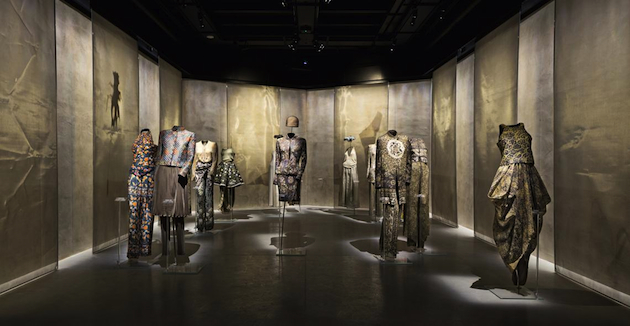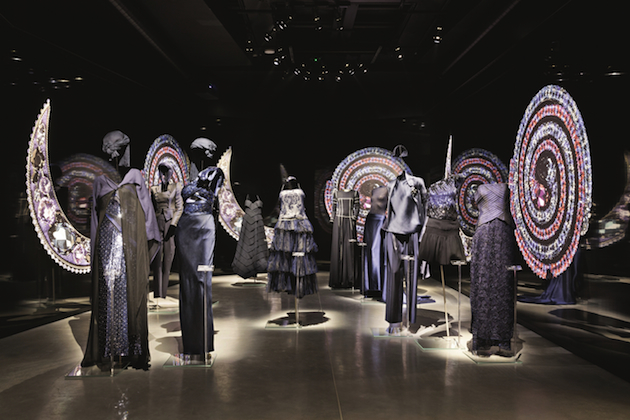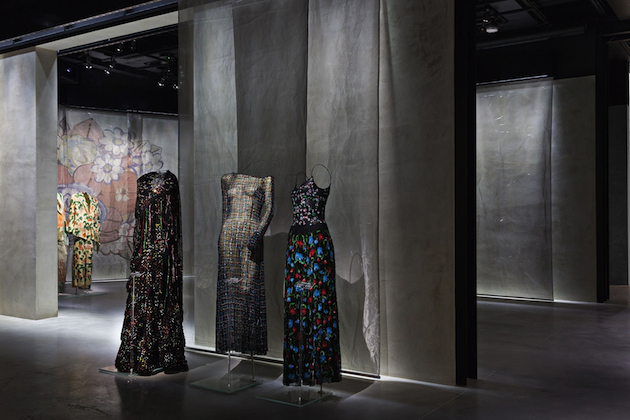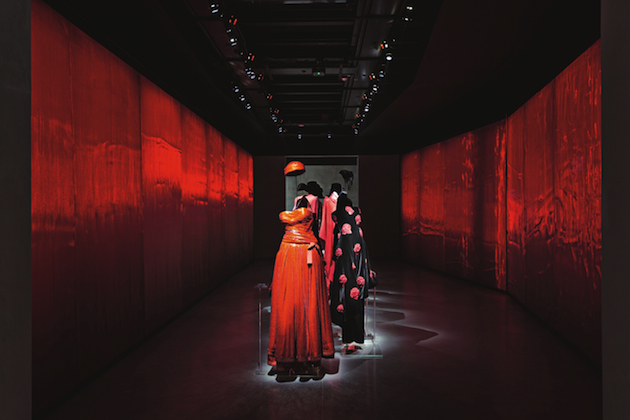
When, in 1983, Diana Vreeland dedicated an exhibition at the Metropolitan Museum of Arts in New York to Yves Saint Laurent, she managed to bring contemporary fashion to the attention of the art world. Her choice to show the work of one living designer in an established institution has set sail to most of fashion exhibitions organised from then on. The action was groundbreaking mostly because it brought contemporary objects, the kind of objects you could find on the streets and actually buy, within the almost sacred walls of a museum. Giorgio Armani was dedicated a retrospective at the Guggenheim Museum in New York in 2000. The retrospective, curated by Germano Celant and Harold Koda and designed by Robert Wilson, was conceptually inspired by the one Vreeland dedicated to YSL and reflected on the practice of Armani and his contribution not only to fashion, but to culture in a wider sense. The exhibition then moved to Bilbao, Berlin, London, Tokyo, Shanghai, and Milan, always adding new paragraphs to the discourse started in New York.

Fifteen years after the first exhibition, Giorgio Armani inaugurated his own museum in Milan. Though a ‘museum’ is not its proper name. Mr Armanis decided to shape his museum in the form of the living archive and to call it ‘silos’, recalling the storage units in which food was stowed. The collection of almost 5-hundred outfits puts on stage the 40 years of activity of the brand, individuating four main themes that have characterised the production: daywear, exoticisms, colour-schemes and light. His is an archive that is not organised chronologically, but as a reflection on the inspirations, individuating paths and creating sentimental families of outfits to guide the audience to the understanding of his most iconic designs. Each corner can be read singularly, and still fits into a wider discourse that visually communicates a recurrent thought, a feeling. The dimension of time passing is intentionally lost, in favour of a transverse crossing of the history of the fashion house, which is also the story of a man’s life.

The clothes are displayed without context and stripped of their narrative apparatus – advertising campaign, sketches, fashion-shows, shootings. This corollary can be found in the digital archive, on the third floor, which is open to public and holds almost 4000 records, between technical descriptions of all the items, cultural references and links to art and fashion history. To think and build a whole museum dedicated to the practice of one designer is different from curating a temporary exhibition. Both of them deal with time: the first is set into a well-defined period and the message it holds becomes a memory after its ending, while the second has to resist time and challenge its course, always having something to say in its relatively fixed form. It is only in this way that the museum, rather than being a static institution, becomes a breathing organism, bearing and supporting always new and fresh interpretations.


